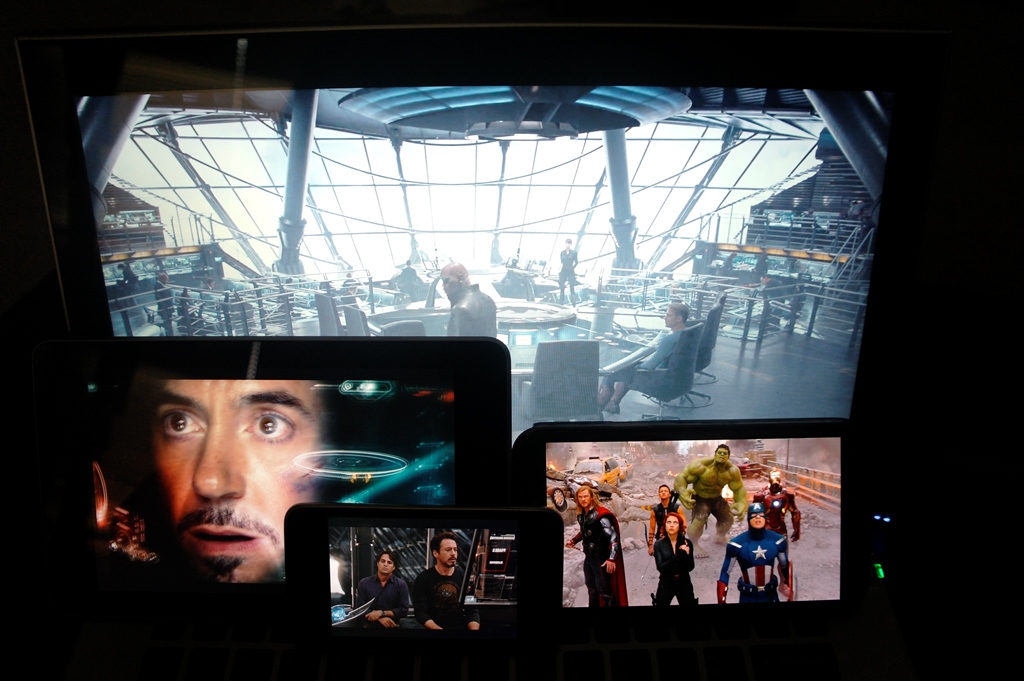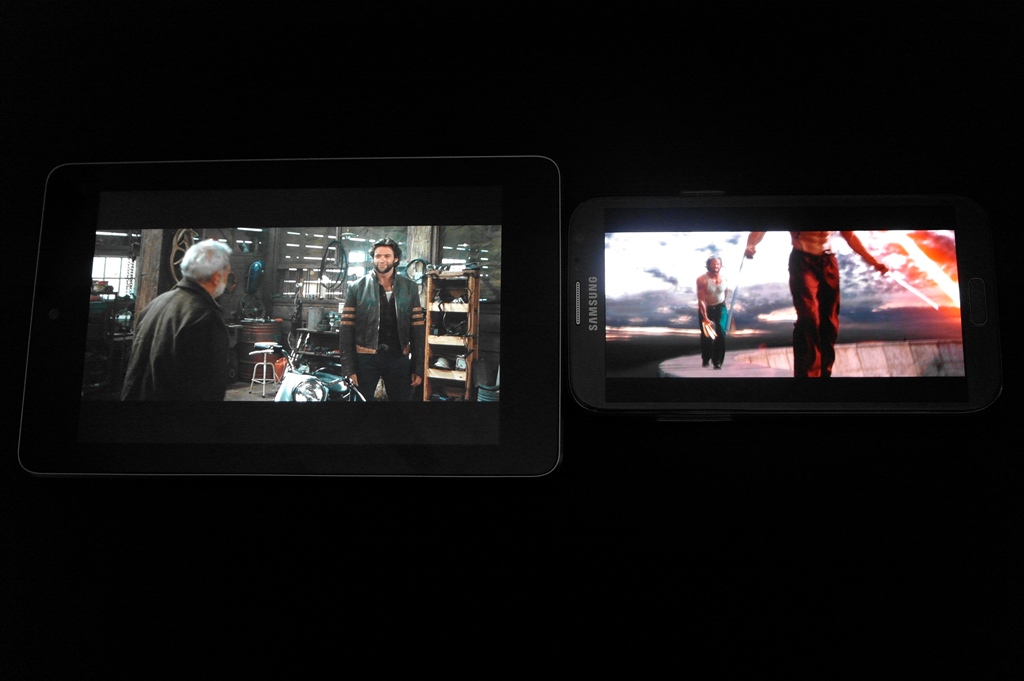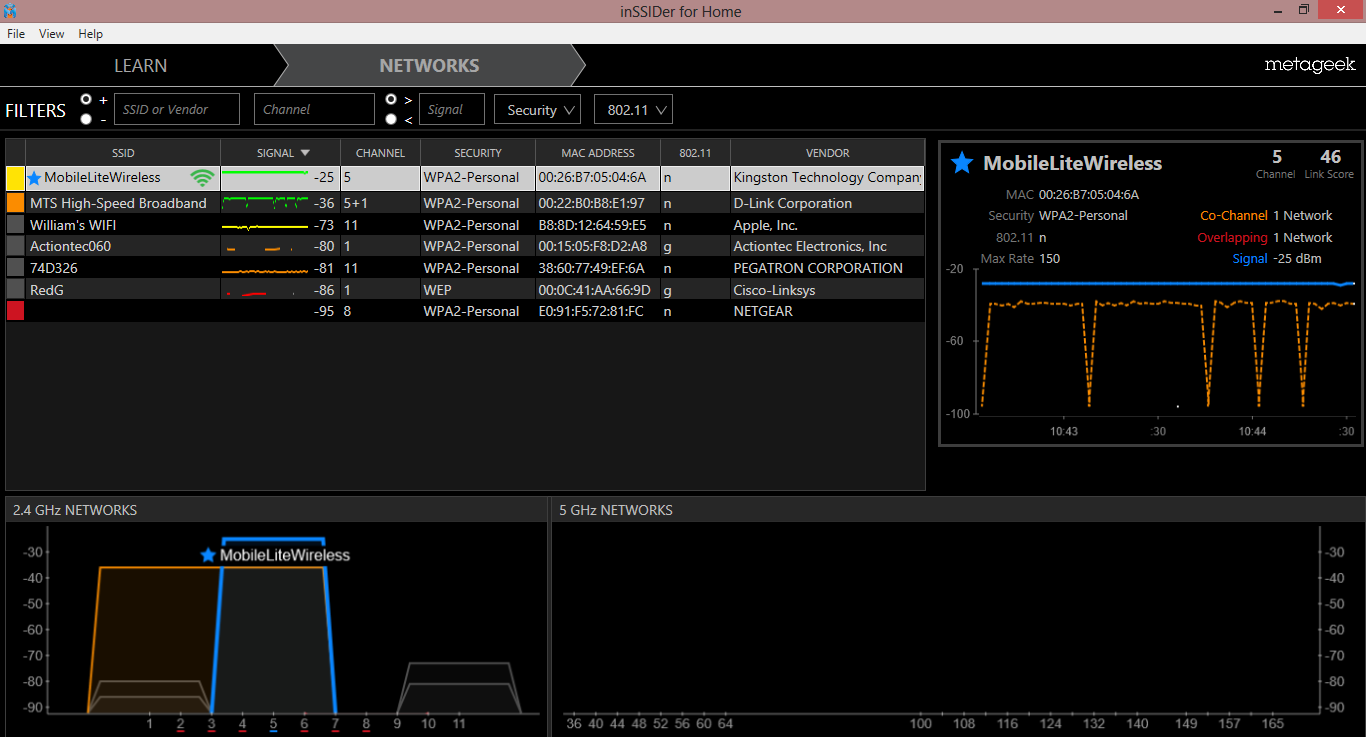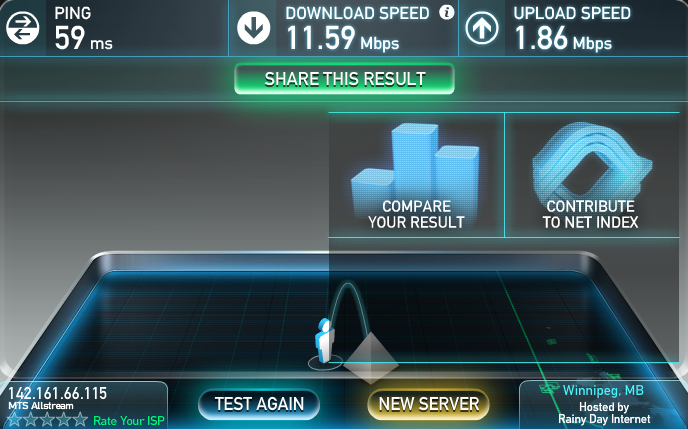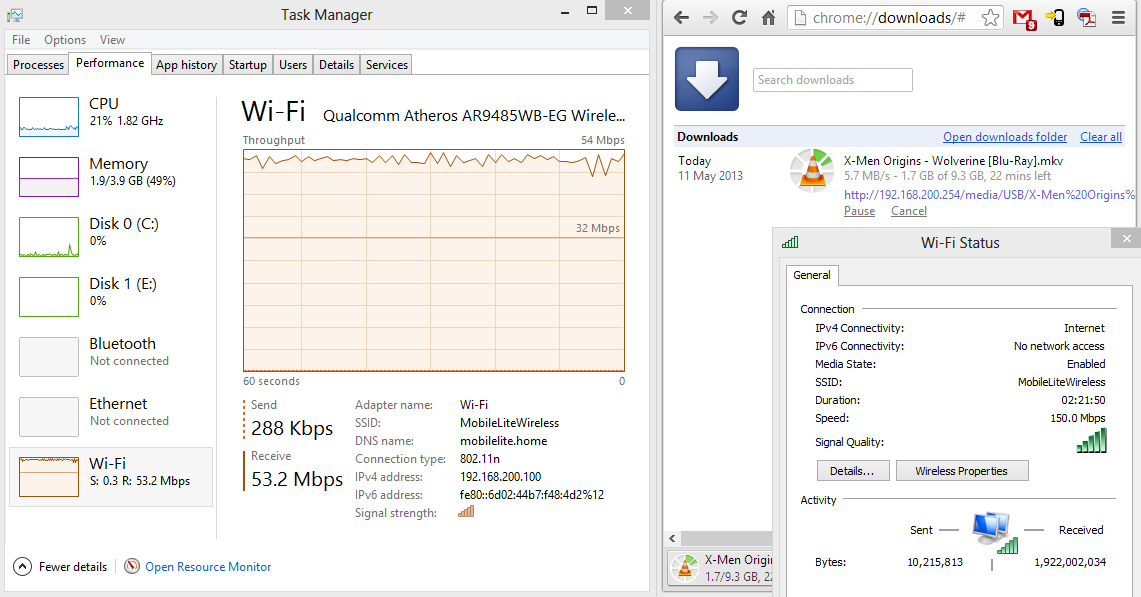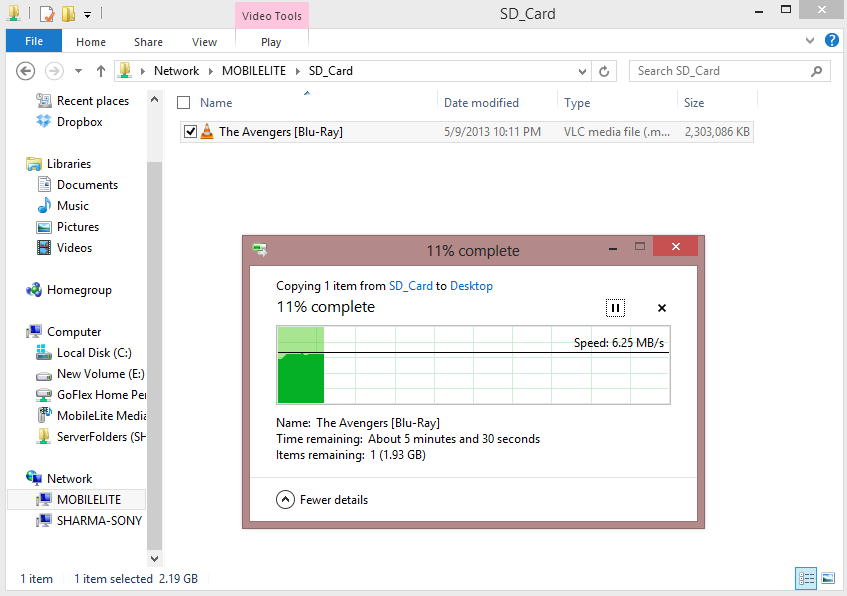Here are the results:
As we can see there are no problems at all streaming to four devices. Both the Kingston USB flash drive and SDHC flash card had a copy of the two video files. Since videos streaming is the more demanding of all the options, we will be limiting testing to just that portion and leaving out pictures, music, documents, etc. Keep in mind that while the apps have their own video player (and you can force-select your preferred media software), live transcoding is client based. This becomes an issue only if you have lower-end devices incapable of HD streaming.
Since iOS cannot play Matroska files, the Note II and Nexus 7 seamlessly streamed the large X-Men Origins: Wolverine MKV:
Throughout the streaming process, there were absolutely no hiccups. The Kingston MobileLite worked flawlessly, and better than advertised. Even high-speed scrubbing/scrolling was transparent, with no lag or buffering when skipping through the two videos. All were playing at totally different times without delay, and both tests using the USB drive and SHDC card yielded identical results.
The limitation of three devices and streams is most likely due to variable network conditions. Our LAN network is 1Gbps wired, 300Mbps wireless-N, so theoretically we could play on even more devices. If you recall the MobileLite has wireless-N as well, but the specs do not mention what speed. We decided to monitor bandwidth and signal strength while testing, as well as find out the device speed:
Absolutely excellent performance. We have a solid signal with no fluctuations, and more importantly no interference from overlapping networks. The wireless-N speed is also shown as being single-band 150Mbps, capable of moving data at 18.75MB/s. The MobileLite can download files from the iOS app, but since the iPod is wireless-G only, we will be using the Sony VAIO T13 instead for transmission data and full-N speeds.
On a good day our connection of 32Mbps download/2Mbps upload rounds-out at 30Mbps/1.90Mbps on wi-fi. On average due to the heavily-congested area, the signal drops to about 22-25Mbps/1.90Mbps during peak times.
Since the Kingston MobileLite Wireless uses WDS wifi-wifi bridging, this means that it works as a repeater as mentioned previously. Since there is one 150Mbps radio, it is forced to run in half-duplex mode, meaning that bandwidth is halved. Therefore we should see speeds of 11-13Mbps download:
And that is exactly what we see. 1.5MB/s for each user on the device is not too shabby, but keep in mind the speed is based on your connection. In a LAN setting however the speed should be identical for all users. Both the USB and microSD drives are capable of 20MB/s read and 14MB/s write, and since 150Mbps is roughly 18.75MB/s, we should see fully-saturated write speeds. There is no repeating mode in LAN since we are connected directly to the MobileLite which acts as a router/AP in LAN:
Considering the devices used for testing are right by each other, these results are not optimal. Transfer speeds do not break over 6.5MB/s as also illustrated by the Windows explorer:
 Technology X Tomorrow's Technology Today!
Technology X Tomorrow's Technology Today!

